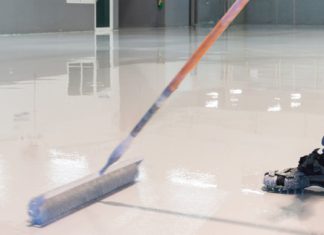Roohome.com – Is your roof looking old or discolored? Are shingles breaking? Understandably, you want to fix it or replace it as soon as possible. Nobody wants their roof to leak—or to look worse than other roofs in the neighborhood.
But do you need a new roof? There are two paths to choose from:
-
If damage is limited, you might just need to fix or replace a few shingles.
-
If damage is serious—or the useful lifespan of the shingles is over—you might need to completely replace your roof surface with new shingles (or even choose a new type of covering, such as clay tiles or metal panels).
If you are still asking how do I know when I need a new roof, you’ll get a better sense if you inspect your roof on a regular schedule. This will give you an early warning if any issues are developing. If you catch problems when they’re small, you’ll be able to rely on small repairs until the shingles are truly worn out.
How to Inspect Your Roof
The primary function of a roof inspection is to check for any damage. Damaged shingles, tiles, panels, chimneys, or other features can let water into the roof structure and cause even more damage.
Experts at Frisco Roofer revealed that you can put inspections on your calendar several times each year, such as after every season. Changes in temperature and weather are likely culprits.
Here are some types of roof damage to look for (both on the roof and inside the house):
-
Interior wall or ceiling stains: Check the walls and ceilings inside the house for any discoloration, which can be a clue that the roof or walls leak. Any moisture should be addressed quickly, preferably before it causes mildew or mold.
-
Peeling or blistering paint: Is any of the exterior paint on the roof peeling or blistering? This may be caused by a buildup of moisture in the home.
-
Leaks in the attic: If you have an attic, pay special attention to it after a storm. Leaks there could mean a shingle or two have been broken or removed. Or something else has failed, such as flashing or the roof underlayment.
-
Damaged roof foundation: The decking or sheathing of a roof is the foundational plywood layer. If it’s damaged, you might see a ceiling leak, a patch of missing shingles, a place where your ceiling sags, or a broken gutter.
-
Cracked or broken shingles: Asphalt shingles eventually start to crack, curl, become brittle, and/or fall off. They have a certain lifespan, and yours could be expiring.
-
Discolored streaks: If you notice a dark streak across your shingles, it could be caused by algae, lichen, or moss. It may need to be cleaned or the shingles replaced.
How Old Is Your Roof?
Looking for an easy answer to the question: do I need a new roof? A good rule of thumb is to replace your roofing materials when they reach the end of their projected lifespan. You can check your warranty to find out when that will be or call your installer.
If you bought the house recently and don’t know the shingle age, you can rely on other clues and principles:
-
If your neighbors’ houses were built around the same time as yours, you could replace your roof when they do.
-
If your shingles look old, worn out, curled, bald, and so on, they might need to be replaced.
-
If you think the roof is over 20 years old, it’s probably due.
-
If the weather and temperature changes in your region are unusual, shingles could wear out more quickly.
If you want to replace your roof materials completely, you can go through this roof replacement checklist from DMG Exteriors to make sure you get it done right.















